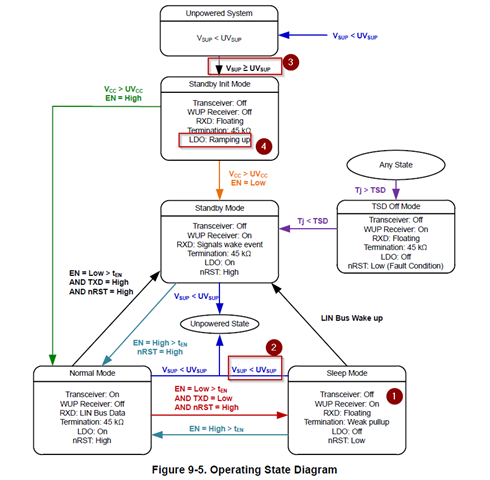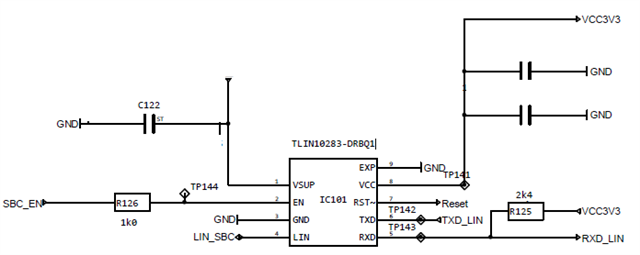steps for reproduce the failure:
1,configure the system into sleep mode
2,reduce power supply to 0
3,power supply increase again above UVsup
4,the LDO ramping up is not observed as marked in state machine , RST is also keep low.
Question: Could you help explain how this can happen?
TLIN10283-DRBQ1 used, schematic attached as below


